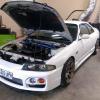R33 Rb30 Conversion
Announcements
-
Similar Content
-
Latest Posts
-
E30 and E85 will both be reacting with whatever they can. One just has a little less in it and will take a little longer for you to see the things it's reacting with. Plenty of replacement stuff out there that's ethanol friendly, and then it won't matter what Ex blend you run once you do a full flex tune. Also fill flex would still be beneficial to you, even for the minor % changes down at E30.
-
By crustycereal · Posted
because the cheapest one is over 1k lol -
By crustycereal · Posted
So your saying e30 is a wate of time? there's plenty of solid calculators out there that can give you the exact amount flex fuel just re adjusts the tune for you which you wont have to do if you just calculate it accurately. and the point of running e30 over e85 is to not ruin your fuel lines. -
By TurboTapin · Posted
Thanks for the explanation, I'll sleep a little smarter tonight! Cheers. -
By Djdannyr32 · Posted
Being this happened about 4 years ago, i honestly forget exactly what is was, but I wound bringing to Simon at SR Werks when he was here in NY. He was able to properly diagnose and repair. I believe it had to do with the harness behind my dash.
-








Recommended Posts
Create an account or sign in to comment
You need to be a member in order to leave a comment
Create an account
Sign up for a new account in our community. It's easy!
Register a new accountSign in
Already have an account? Sign in here.
Sign In Now